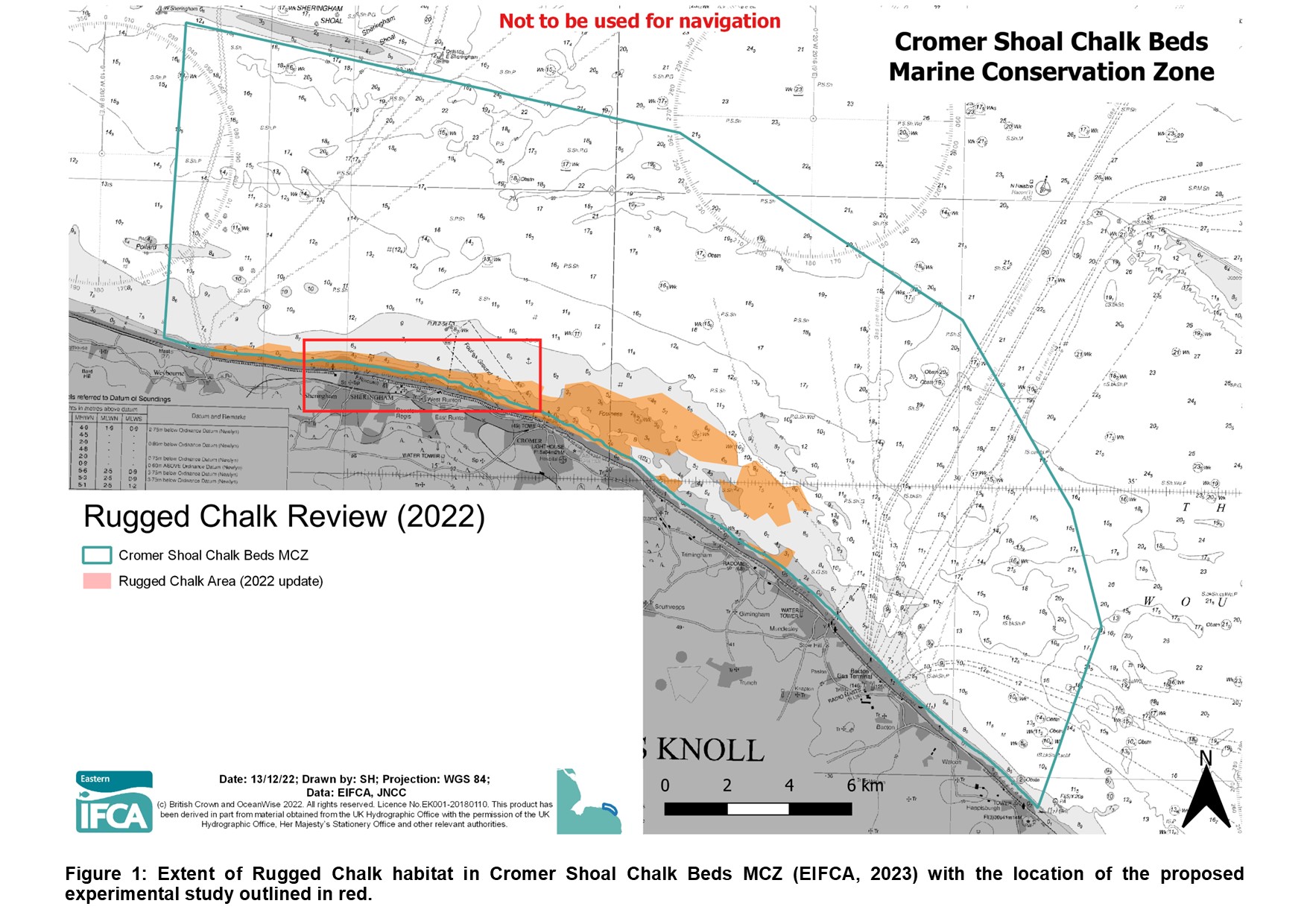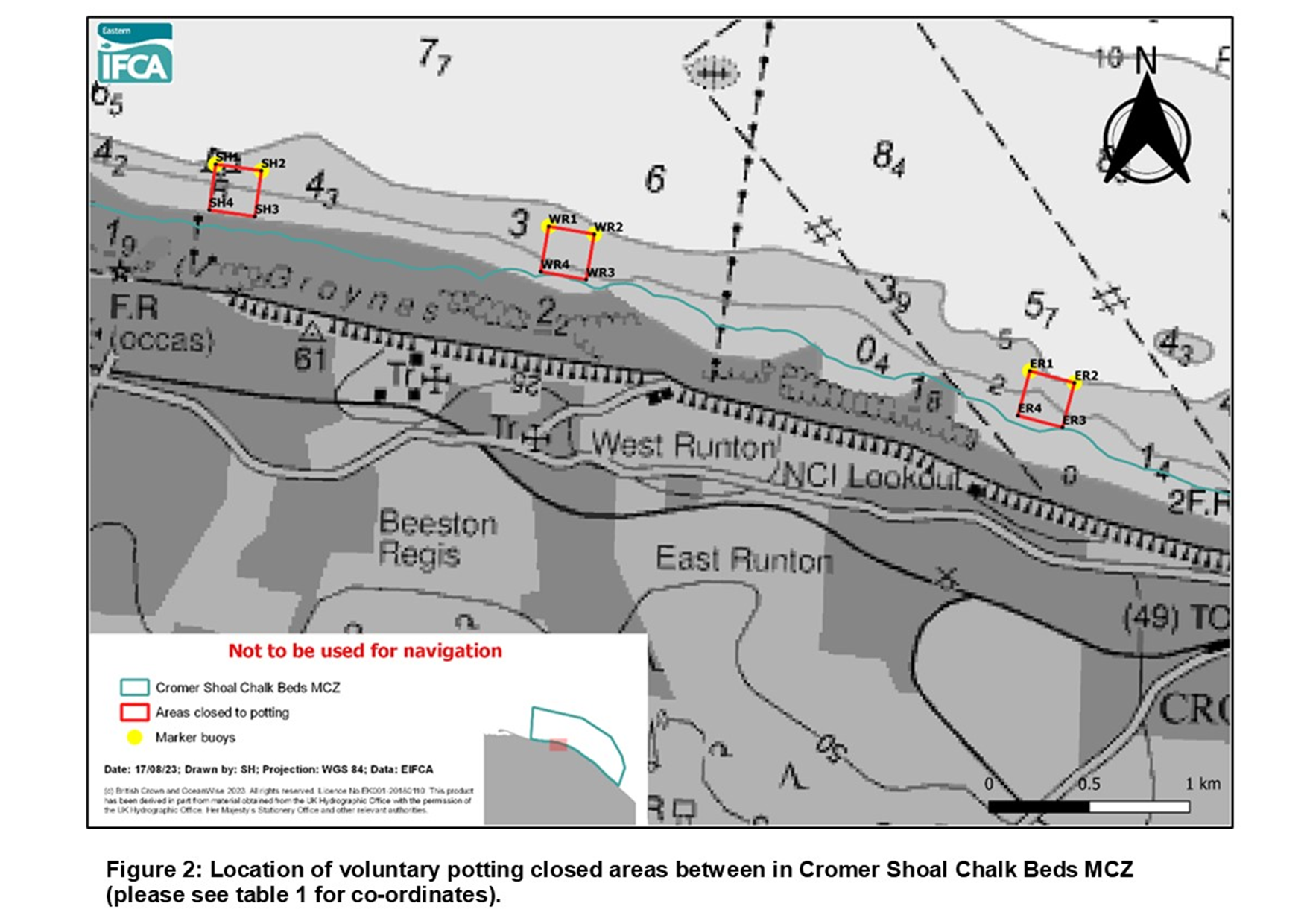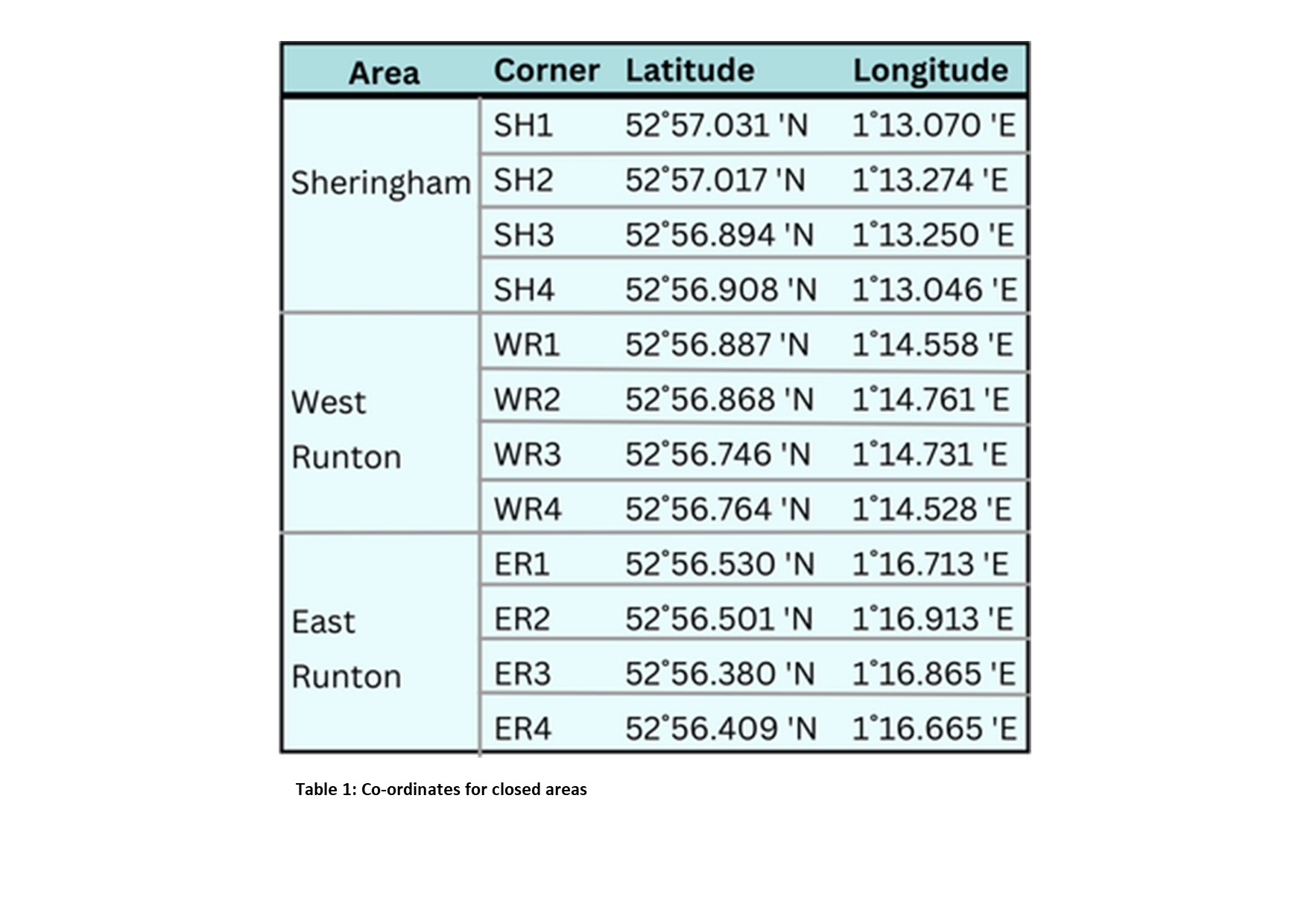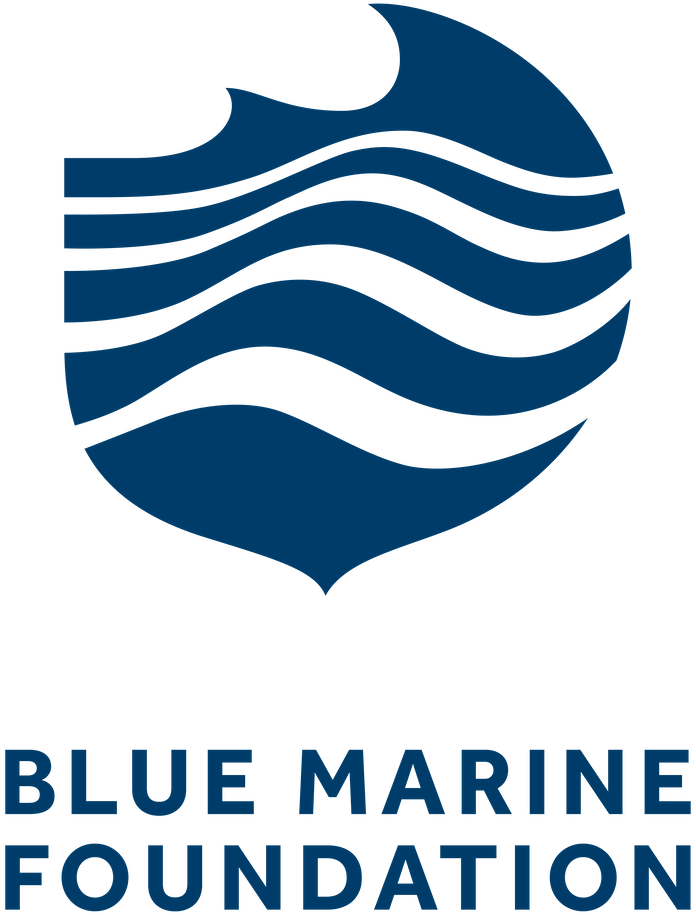Cromer Shoal Chalk Beds MCZ Natural Disturbance Study
Cromer Shoal Chalk Beds MCZ ARM project, working with project partners Blue Marine Foundation, University of Essex and Natural England, have developed a research project to collect evidence on the levels of naturally caused damage to the rugged chalk in the MCZ and to compare this with areas fished using pots. Whilst it is understood that potting activity may cause some level of damage to rugged chalk, there is little evidence available that shows the level of damage caused naturally (e.g. during winter storms). Understanding this is important in terms of putting the level of damage caused by fishing activity into perspective. To achieve this, three small areas voluntarily closed to potting are needed so that damage can be measured in the absence of fishing activity. These areas have been agreed with input from the fishing industry, other recreational users and university researchers.
Blue Marine and Eastern IFCA held a meeting in February 2023 to discuss this project with local fishermen who fish within the inshore area of rugged chalk within the Cromer Shoal Chalk Beds Marine Conservation Zone (MCZ). The meeting aimed to gain input and support for three small voluntary closed areas to fishing within this zone, so that damage can be measured in the absence of fishing activity. Consensus was reached with the fishermen who attended agreed for the three areas to be distributed evenly across the MCZ and closed temporarily for a period of three years.
The project partners have now finalised the study design based on feedback from fishermen, other recreational users and university researchers.

CLOSED AREAS
Below is the final location of voluntary closed areas based on further in-depth assessment of areas of rugged chalk. The three areas will be closed to commercial and recreational potting on a voluntary basis between Sheringham and Cromer from September. Closed areas are 150m x150m in size with an external 40m buffer to ensure that any accidental movement of gear into this zone does not impact research areas and detriment the study. Please see Table 1 for coordinates of the closed areas.


MARKING OF AREAS
Marker buoys will be placed at the two northerly corners of each of the closed areas (Figure 2). We will contact fishermen with a date of when the marker buoys will be deployed and provide a minimum of two weeks notice.
These will line up with transit lines onshore to define the edges of the closed areas. Transits will not be in place until 2024. Landmarks along the coast have been identified (Figure 3) to provide visual markers in the interim as a rough guideline.
GPS positions of closed areas are provided in Table 1 so that they can be inputted into plotters.
For those who do not have plotters, the closed areas will extend from the outermost points down to the shoreline. Funding may be available through funding schemes for fishermen who don’t have plotters:
Funding schemes | UK seafood industry | Seafish (but please be aware that the FASS scheme is now closed)
Fishing Animateur is a website that can support fishermen with finding funding and filling in applications.
Please see figure 3, here, showing landmarks which provide visual markers for the edges of the closed areas.
WHEN AND HOW LONG?
Areas will be closed from Thursday 14th September as this is when planned surveys are due to start. All gear must be removed from this area prior to closure. Please note that marker buoys will not be in place at this point due to delays in the MMO licencing process. In the meantime, fishermen will have to rely on GPS and coordinates to satisfy themselves that they are not in the voluntary closed areas.
The areas will be closed for a period of 3 years until the appropriate surveying and monitoring has been completed (likely November 2026).
MONITORING METHODS AND PARTNERS
Monitoring will include multibeam surveys, dive surveys, Remotely Operated Vehicle surveys, abiotic assessments and fishing activity monitoring, conducted by both Eastern IFCA and the University of Essex.
COMMUNICATION
All fishermen and other marine users will be kept updated about the study and the results via a range of methods including in-person meetings and drop-ins, website updates and newsletters.
For further information about the project please see:
Any questions and for additional information about the study please contact us or email:
samanthahormbrey@eastern-ifca.gov.uk or emilyb@bluemarinefoundation.com

